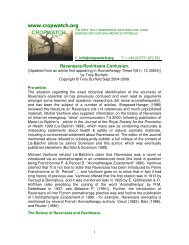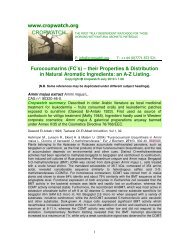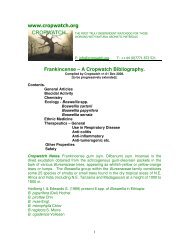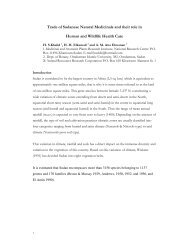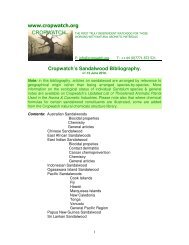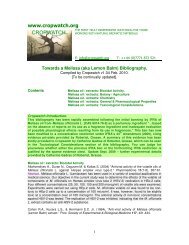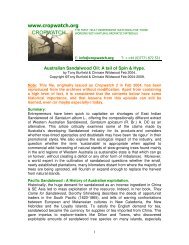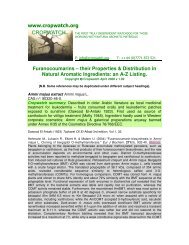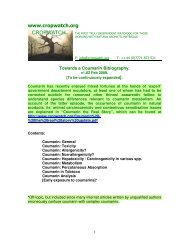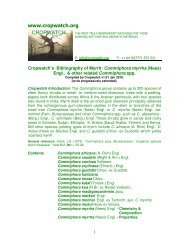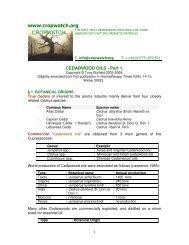The Adulteration Of Essential Oils - Cropwatch
The Adulteration Of Essential Oils - Cropwatch
The Adulteration Of Essential Oils - Cropwatch
You also want an ePaper? Increase the reach of your titles
YUMPU automatically turns print PDFs into web optimized ePapers that Google loves.
of signed supplier certificates. <strong>The</strong>se many relate to allergenic properties,<br />
GMO free production, monochloropropandiol content, pesticide levels etc.<br />
Certificate of Naturalness fulfilling the requirements of European Directive<br />
88/388/EC assures that oils are produced by purely physical means (steam<br />
distillation, separation of oil from distillation waters by gravity etc.) and that no<br />
additional chemicals (other than water) are used in the manufacture of these<br />
products. Information on the addition of any other components (such as antioxidants<br />
BHA/BHT or tocopherols, colourants, residual solvents according to<br />
CPMP/ICH/283/95 etc) may also be requested.<br />
In other areas, customers may require information on dioxin or dioxin-like<br />
PCB’s, heavy metals, polyaromatic nuclear hydrocarbons etc. etc. to<br />
determine that the material complies with EC Regulations. . A more up-to-date<br />
summary of some of these regulatory requirements can be found at<br />
http://www.cropwatch.org/cropwatch14.htm.<br />
Part 2.<br />
<strong>The</strong> Consequences of <strong>Adulteration</strong> to Aromatherapy & Natural<br />
Perfumery Practice.<br />
Background.<br />
Aromatherapists and natural perfumers have long required that their e.o.’s are<br />
genuine, but conversely, the essential oil trade has traditionally offered oils to<br />
the perfumery and flavourings trades on a “buyer beware” principle.<br />
<strong>The</strong>refore, the finding in the Which Health report (Health Which 2001) on<br />
aromatherapy oils, citing a case where a labelled sandalwood oil turned out to<br />
be a synthetic sandalwood aroma chemical, cannot come as a complete<br />
surprise.<br />
Whilst many e.o. used in aromatherapy are sourced from commercial oil trade<br />
outlets, other items are offered by smaller dedicated aromatherapy oil<br />
producers. In attempt to make themselves uniquely positioned in the oil<br />
market, aromatherapy oil suppliers have previously boasted that their oils are<br />
distilled longer and under gentler conditions to produce superior oils. This is a<br />
complete nonsense – longer treatment can only encourage greater artefact<br />
production via thermal degradation, and any perceived more pleasing odour<br />
effect is possibly due the increased oil complexity (via the creation of<br />
artefacts). Even more curious is the easy acceptance of hype that CO2<br />
extracts are suitable for the aromatherapy community. In many cases the CO2<br />
extracts are of unknown composition and toxicity, extractions are not<br />
standardised (depending on operating conditions CO2 extracts can resemble<br />
either resinoids or essential oils, and all stages in between) and the use of<br />
any co-solvents during processing is often omitted by suppliers. Furthermore<br />
the concentration of pesticide residues during the CO2 extraction of spices are<br />
from seven to fifty three times greater than the values obtained by use of<br />
conventional solvents, according to Guba R. (2002).<br />
Consequences.<br />
<strong>The</strong> adulteration of essential oils leads to the following concerns:<br />
16





